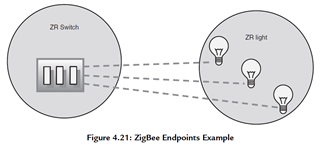Hello,
How can I have two or more temperature probes reporting using the ZCL library?
Imagine that I want to have a device that measures for instance two temperatures at two different locations (Inside/Outside a fridge). How can I report these two temperatures? I learned that each application can have a set of clusters, but can I have duplicated clusters in the same application? If so, how can I do that?
The cluster that I want to use is the temperature measurement (0x0402).
Thanks in advance,
Best regards,
Fernando



